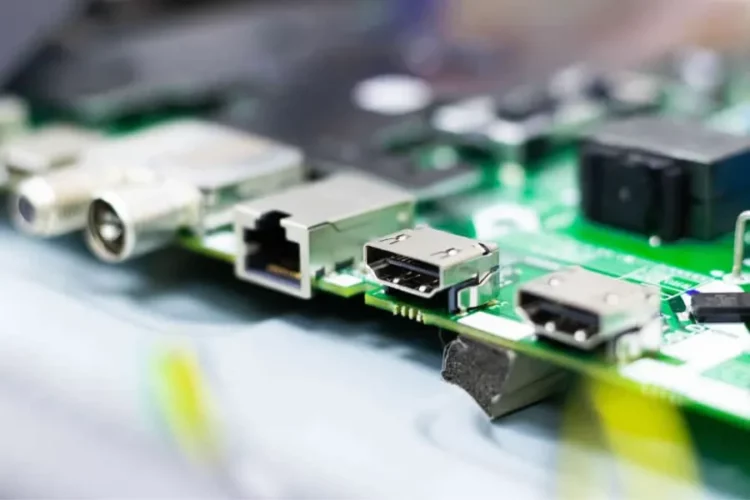In the ever-evolving landscape of computer hardware, the motherboard serves as the backbone of your system, connecting various components seamlessly. One of the key features that users often overlook is the HDMI port on their motherboards. In this comprehensive guide, we will delve into the process of enabling the motherboard HDMI and explore its advantages and drawbacks. Additionally, we will address common queries such as troubleshooting issues, the compatibility of motherboards with HDMI, and the perennial debate: Display Port vs. HDMI.
Can I Use Motherboard HDMI Without Integrated Graphics?
No, motherboard HDMI relies on integrated graphics for functionality. If your CPU lacks integrated graphics, you will need a dedicated graphics card to connect your monitor.

Enabling Motherboard HDMI:
1) Check for Integrated Graphics in Your CPU:
Before diving into the world of motherboard HDMI, it’s essential to ensure that your CPU is equipped with integrated graphics. Not all processors have this feature, so checking the specifications of your CPU is crucial. In most cases, modern CPUs from reputable manufacturers come with integrated graphics capabilities.
2) Enable Integrated Graphics in BIOS:
Once you’ve confirmed the presence of integrated graphics, the next step is to enable it in the BIOS. Accessing the BIOS (Basic Input/Output System) may vary depending on your motherboard model, but it generally involves pressing a specific key during the system’s boot-up. Once in the BIOS, navigate to the “Advanced” or “Integrated Peripherals” section to enable integrated graphics.
3) Connect to Your New Monitor:
With integrated graphics enabled, connect your motherboard’s HDMI port to your new monitor. The HDMI cable serves as the bridge between your computer and the display, transmitting both audio and video signals. Ensure a secure connection to enjoy a seamless visual experience.
4) Install the Integrated Graphics Driver:
To optimize the performance of your integrated graphics, it’s crucial to install the appropriate driver. Visit the official website of your motherboard’s manufacturer or the graphics chip vendor (e.g., Intel, AMD) to download and install the latest drivers. Updated drivers not only enhance performance but also address potential compatibility issues.
Advantages of Using Motherboard HDMI:
- Simplicity and Accessibility: Motherboard HDMI provides a straightforward and easily accessible solution for connecting your computer to a monitor or TV.
- Audio and Video in One Cable: HDMI combines audio and video signals in a single cable, simplifying cable management and reducing clutter.
- Widespread Compatibility: HDMI has become a standard interface, ensuring compatibility with a wide range of monitors, TVs, and audio-visual devices.
- Limited Performance: While suitable for everyday tasks, integrated graphics may not meet the demands of high-end gaming or graphics-intensive applications.
- Resolution and Refresh Rate Limitations: Integrated graphics may have limitations when it comes to supporting higher resolutions and refresh rates compared to dedicated graphics cards.
Why is My Motherboard HDMI Not Working?
- Faulty Cable or Connection: Ensure that your HDMI cable is not damaged and securely connected to both the motherboard and the monitor.
- Outdated Drivers: Check and update your integrated graphics drivers to the latest version.
- BIOS Settings: Revisit the BIOS settings to confirm that integrated graphics are enabled.

Is a Display Port Better than HDMI?
- Bandwidth and Resolution: Display Port generally offers higher bandwidth, allowing for higher resolutions and refresh rates compared to HDMI.
- Adaptability: Display Port supports daisy-chaining multiple monitors, making it a preferred choice for multi-monitor setups.
- G-Sync and FreeSync Support: Display Port is often the preferred choice for adaptive sync technologies like NVIDIA G-Sync and AMD FreeSync.
Do All Motherboards Support HDMI?
Not all motherboards come equipped with an HDMI port. It depends on the motherboard model and its specifications. When purchasing a motherboard, check the product details to confirm the presence of an HDMI port.
Can I use a dedicated graphics card and motherboard HDMI simultaneously?
Yes, many systems allow the use of both a dedicated graphics card and the motherboard HDMI simultaneously. However, this may vary based on your motherboard and BIOS settings.
How do I check if my CPU has integrated graphics?
Refer to your CPU’s specifications on the manufacturer’s website or consult the documentation that came with your processor. Most modern CPUs from Intel and AMD include integrated graphics.
Are there any advantages to using a dedicated graphics card over motherboard HDMI?
Dedicated graphics cards generally offer superior performance, making them suitable for gaming and graphics-intensive tasks. They also support advanced features not available with integrated graphics.
Can I use HDMI for gaming on my motherboard?
While motherboard HDMI is suitable for casual gaming and everyday tasks, dedicated graphics cards are recommended for a smoother gaming experience, especially for demanding titles.
Is it possible to enable integrated graphics if my CPU initially doesn’t support it?
No, integrated graphics are a hardware feature embedded in the CPU. If your CPU lacks integrated graphics, you will need to use a dedicated graphics card.

